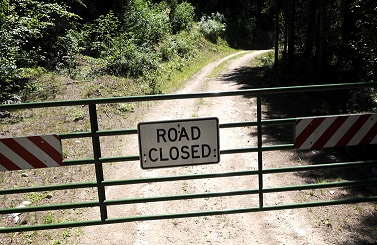This post was originally published on Healthy Forest
The U.S. Department of Agriculture’s decision to rescind the 2001 Roadless Rule is one step towards reversing decades of forest neglect that has left millions of acres vulnerable to severe wildfire, insect infestations, and disease.

Enacted during the final hours of Bill Clinton’s presidency, the Roadless Rule unilaterally imposed sweeping restrictions on road construction and timber access across nearly 60 million acres, or nearly one-third of all National Forest System lands.
The Roadless Rule was never passed by Congress. Instead, it was implemented administratively, bypassing the legislative process required to designate new Wilderness areas under the 1964 Wilderness Act.
While Congress has formally designated 36 million acres as Wilderness, the Roadless Rule locked up an additional 59 million acres as “de facto wilderness” where active forest management is effectively barred.
Today, many forests in roadless areas are overstocked and choked with dead and dying trees. Nearly half of all roadless acres are now located in areas rated at high or very high wildfire risk. Since the rule was enacted, more than 8 million acres of roadless forests have burned, and wildfire suppression costs have skyrocketed.
Contrary to some claims, rescinding the rule does not mean that 60 million acres will suddenly be opened to logging. It does not repeal any environmental laws, override local forest plans, or eliminate the need for site-specific environmental review.
All projects on federal lands, including those in former roadless areas, must still comply with the National Environmental Policy Act, the Endangered Species Act and many other regulations. Each national forest also operates under a management plan developed with public input, which continues to guide decisions on what activities are appropriate and where.
What the rescission does achieve is the removal of a rigid, one-size-fits-all policy that has restricted even the most basic access needed to manage forests safely and responsibly. It restores the Forest Service’s ability to consider building temporary or permanent roads where necessary for fuels reduction, forest restoration, emergency response, or critical infrastructure work.
Access to public lands also supports safe and effective firefighting. Without roads, firefighters can’t reach ignition points, build fire lines, or safely evacuate. Better access means faster response, safer operations, and a greater chance of stopping fires before they threaten our communities.
The Forest Service will soon undergo a public rulemaking process before any final rescission of the Roadless Rule. This will include an advance notice of proposed rulemaking, opportunities for public comment, and the publication of a final rule. The agency will also conduct a full environmental review under NEPA, consult with Tribes, and work closely with state governments throughout the process.
Source: Healthy Forest





0 Comments